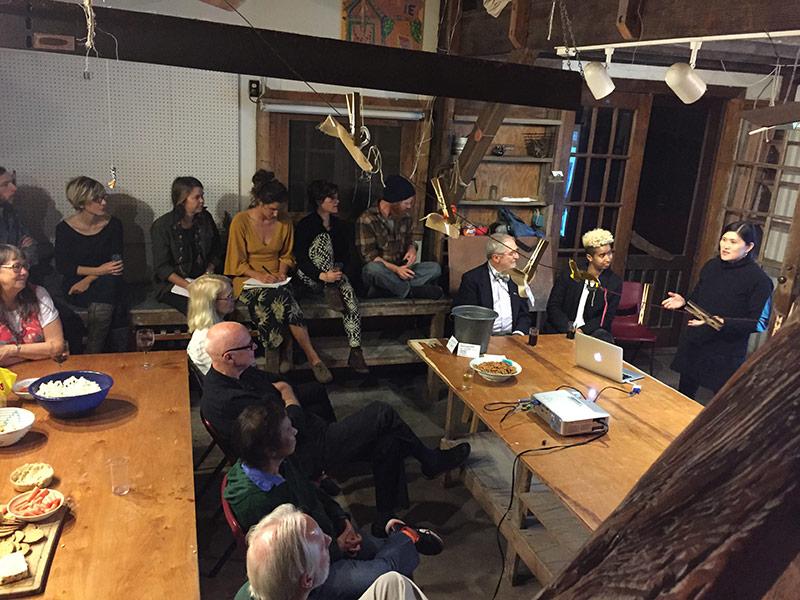Using art to illuminate science
In 2014, the Tulane program A Studio in the Woods started the ‘Flint and Steel: Cross Disciplinary Combustion’ residency program, which partnered artists with academic scholars. Many of these residencies serve to illustrate that interdisciplinary collaboration can be vital to engaging the arts for science communication.
One of the collaborations involved printmaker Pippin Frisbie-Calder (MFA, ’17), and ecology and evolutionary biology professor of the practice Tim McLean. They transformed images of microscopic phytoplankton into large-scale prints and real-time projections to demonstrate the importance and build awareness of microorganisms in wetland ecosystems.
Now a group of Tulane researchers is looking into the process that went into that collaboration and others that combine art and science. Amy Lesen, research associate professor at the Tulane-Xavier Center for Bioenvironmental Research (CBR), along with Ama Rogan, managing director of A Studio in the Woods, and Michael Blum, CBR director and associate professor of ecology and evolutionary biology, looked at 200 projects melding art and science, from live performances to gallery exhibitions. Their observations are published in Elsevier’s Trends in Ecology and Evolution.
The researchers mapped trending approaches to arts-based science communication, finding many of the works focused on the environment and climate change.
“The arts are particularly well suited to climate science communication because they can foster understanding of the science and outcomes of climate change,” says Lesen, lead author of the study. “They can also elicit visceral, emotional responses and engage the imagination in ways that prompt action or behavior change.”
The researchers developed a list of recommendations based on their review. For example, projects should establish and share information about goals of the work and performance assessments. Their report will likely encourage more communication about art-science projects, including the challenges artists and scientists face during collaborations, as well as project outcomes.

